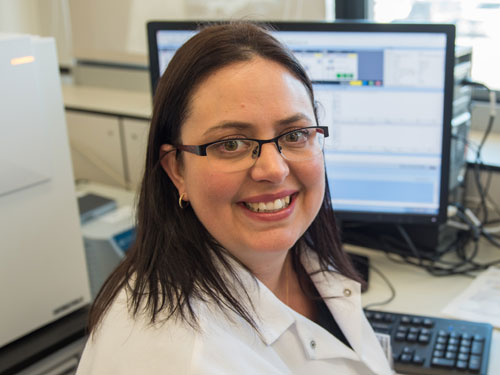2024 Posters
Biotechnology
Session: Biotechnology Poster Session
Novel insights from duckweed: characterization of enzymatic hydrolysates and antihypertensive potentials
Monday, April 29, 2024
5:00 PM - 6:00 PM EDT
.jpg)
Laurent Bazinet, Ph.D
Full Professor
Laval University
Québec, Quebec, United States
Jacinthe Thibodeau
Research professional
Laval University
Québec, Quebec, Canada- MB
Marie-Ève Bernier
Research professional
INAF, Canada
Presenting Author(s)
Co-Author(s)
Abstract: Water lentil (Duckweed), an aquatic plant, presents a promising valorization avenue as a protein source to generate bioactive peptides. However, it remains understudied, with only two reported studies exploring antioxidant and antimicrobial activities. Bioactive peptides derived from plant matrices offer a natural alternative to synthetic drugs, contributing to positive biological effects and promoting long-term health. In this study, defatted duckweed powder underwent enzymatic hydrolysis with pepsin, chymotrypsin, papain, and trypsin. The resulting hydrolysates were assessed for their degree of hydrolysis (DH). After enzymatic treatment, centrifugation was employed to obtain two fractions: the duckweed pellet (DP) and supernatant (DS). The final hydrolysate (DFH), as well as DP and DS, were characterized by identifying peptide sequences, evaluating the total phenolic content (TPC), and testing for ACE-inhibitory activity. These analyses aimed to assess the potential of the hydrolysates as antihypertensive agents. All tested enzymes demonstrated efficient hydrolysis of duckweed powder, yielding DH values ranging from approximately 3% to 9% without prior protein extraction. Peptide characterization using UPLC-MS/MS revealed differences between enzyme-derived fractions and after centrifugation fractions, emphasizing its impact on concentrating specific peptides. While 485 peptides were reported for all hydrolysates, only 51 were common to two or three of these hydrolysates. TPC showed no significant differences in DSs, and the highest polyphenol content in DFH did not correspond to the highest antihypertensive activity, demonstrating peptides involvement. Chymotryptic DFH, chymotryptic DS, and papain DS emerged as the most interesting fractions with IC50 values between 0.55 and 0.70 mg peptides/mL. This study represents the first exploration of enzymatic hydrolysis of duckweed proteins to generate bioactive peptides for potential therapeutic applications. An ongoing comprehensive analysis of the 485 identified sequences aiming to identify peptides responsible for biological activities is underway, considering factors such as molecular weight and amino acid composition.

.jpg)